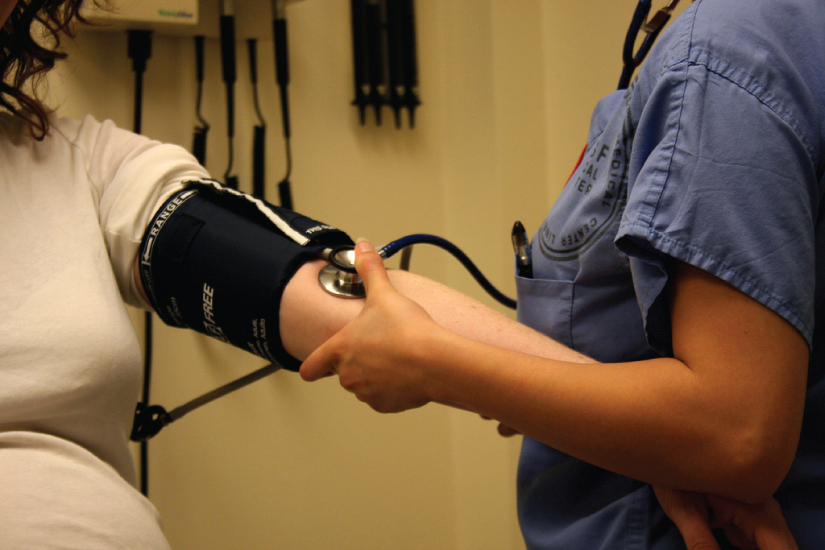
|

1.1 An introduction to the human body Read Online
1.2 The chemical level of organization Read Online

After studying this chapter, you will be able to:
Though you may approach a course in anatomy and physiology strictly as a requirement for your field of study, the knowledge you gain in this course will serve you well in many aspects of your life. An understanding of anatomy and physiology is not only fundamental to any career in the health professions, but it can also benefit your own health. Familiarity with the human body can help you make healthful choices and prompt you to take appropriate action when signs of illness arise. Your knowledge in this field will help you understand news about nutrition, medications, medical devices, and procedures and help you understand genetic or infectious diseases. At some point, everyone will have a problem with some aspect of his or her body and your knowledge can help you to be a better parent, spouse, partner, friend, colleague, or caregiver.
This chapter begins with an overview of anatomy and physiology and a preview of the body regions and functions. It then covers the characteristics of life and how the body works to maintain stable conditions. It introduces a set of standard terms for body structures and for planes and positions in the body that will serve as a foundation for more comprehensive information covered later in the text. It ends with examples of medical imaging used to see inside the living body.
Question: 10 yr old dog presents with 2 monts history of a "horse" bark , difficulty swallowing , and gagging . The dog also becomes weak when exercising. This dog has good appetite, diet, no weight loss, and up to date on vaccinations. No significant findings upon PE except loud respiratory sounds over pharynx. . Besides observing the dog eat and drink , you decide to run a myasthenia gravis antibody titer assay, is this considered a necessary diagnostic plan for this dog?
Choices:
Yes, neuromuscular disease causing dysphagia should always be considered.
No, this dog clearly does not have a neuromuscular disease since it is not experiencing regurgitation.
Question: Which of the following is a differential for regurge?
Choices:
Megaesophagus
Foreign body
Esophageal structure
Vascular ring anomaly
All of the above
Question: Cricopharyngeal achalasia is defined as........
Choices:
failure of upper esophagus to relax
failure of lower esophagus to relax
failure of tongue to relax
difficulty swallowing
"horse bark" sound
Question: 10 yr old dog presents with 2 months history of a "horse" bark , difficulty swallowing , and gagging . The dog also becomes weak when exercising. This dog has good appetite, diet, no weight loss, and up to date on vaccinations. No significant findings upon PE except loud respiratory sounds over pharynx. One of the top differentials on your list for this patient should be congenital megaesophagus . True / False
Choices:
True
False
Question: 8 yr old mixed breed dog presents with unproductive coughing, vomitting undigested food, and gagging. The dog is not retching . The vomitting occurs shortly after eating or a few hours later. The cough often proceeds the vomiting. On PE, the dog appears weak, depressed, and nauseated. The only other abnormal finding on PE are wheezes over ventral thorax on left and right side. The dog is current on vaccinations. After taking radiographs, you are able to diagnose this patient with aspiration pneumonia secondary to megaesophagus. What is the best treatment ?
Choices:
Place dog on Metaclopramide for gastric motility and Ranitine for esophagitis along with broad spectrum antibiotics for 2-3 weeks for pneumonia
Treat pneumonia with broad spectrum antibiotics and feed animal using Bailey chair
Need to perform an esophageal larygoscopy for a diagnosis
Surgical myotomy
GIve steroids to treat for possible hypoadrenocortiscism and the aspiration pneumonia should resolve itself
Question: Barium esophagram or endoscopy is the BEST way to evaluate esophageal disease. True/False
Choices:
True
False
Question: 10 yr old dog presents with 2 months history of a "horse" bark , difficulty swallowing , and gagging . The dog also becomes weak when exercising. This dog has good appetite, diet, no weight loss, and up to date on vaccinations. No significant findings upon PE except loud respiratory sounds over pharynx. What is the major problem for this case?
Choices:
Regurgitation
Pharyngintis
Possible Rabies
Dysphagia
"horse bark" sound
Question: Which drug would be used to treat GERD?
Choices:
Penicillin
Omeprazole
Aspirin
Pentobarbital
Carprofen
Question: 14 week old dog presents with vomiting where food "plops out" in solid form 2-15 min after eating . Dog is is not retching and is always hungry. There is no weight loss and the dog seems to be healthy in other aspects. This dog is also up to date on vaccines. PE is normal including a normal gag reflex . A barium study radiograph is performed revealing dilation of the cervical and proximal thoracic esophagus with a narrowing in mid thorax . There is a normal caudal esophagus diameter. What is the most likely differential for this dog?
Choices:
Esophagitis (most likely caused by caustic substance)
Myasthenia gravis
Congenital vascular ring anomaly
Esophageal foreign body
Acquired megaesophagus
Question: Which of the following is FALSE regarding cricopharyngeal achalasia?
Choices:
common in small breed dogs (8-16 weeks of age)
clinical signs include dysphagia, cough, gagging
aspiration pneumonia and rhinitis are possible clinical signs
A barium contrast study radiograph is not an appropriate diagnostic test for this disease, need to do laryngoscope
treatment : cricopharyngeal myotomy
Question: Which drug can cause esophageal strictures in cats from severe inflammation and scarring in esophagus?
Choices:
Pentobarbital
Doxycycline
Morphine
Azithromycin
Penicillin